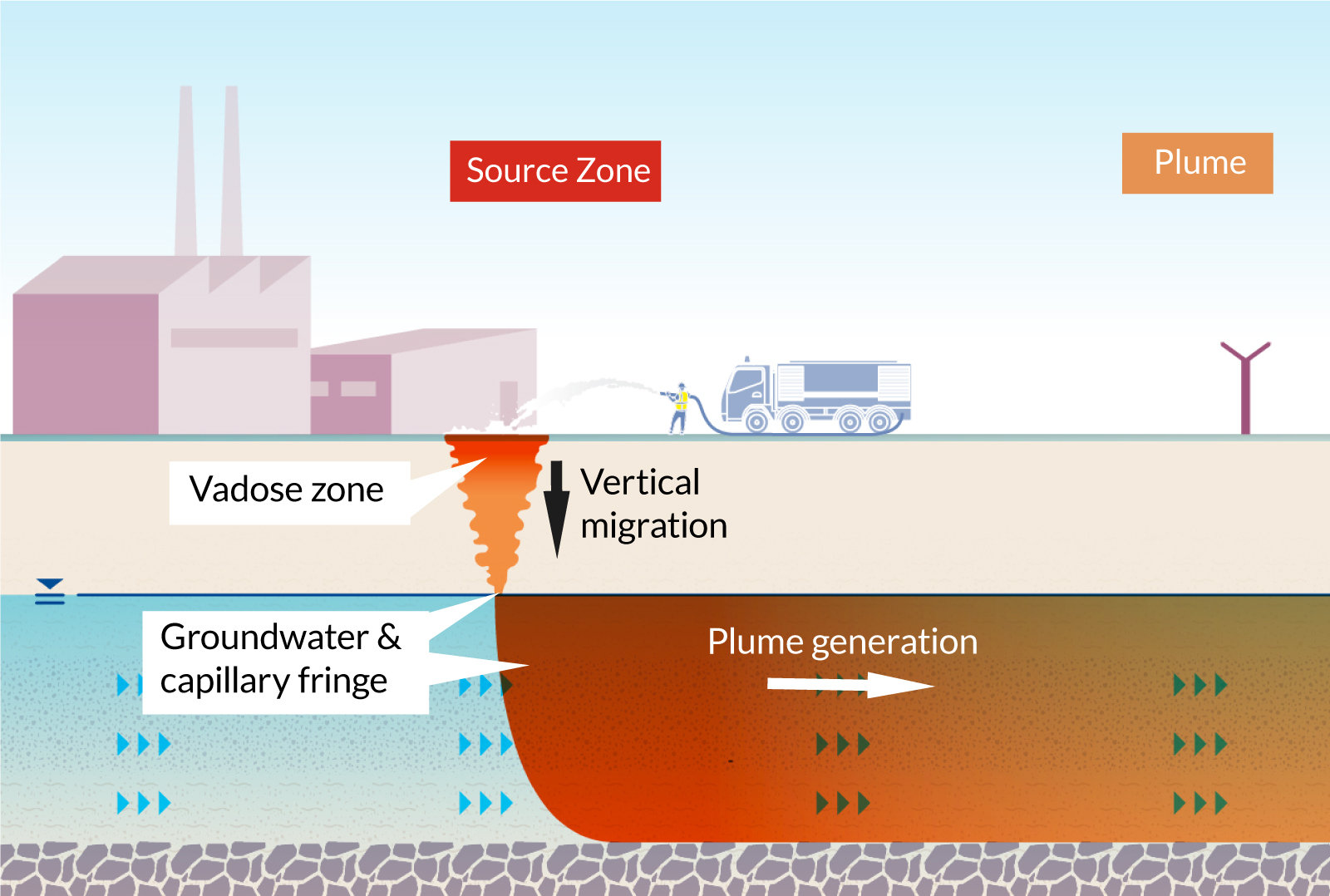Advanced Approaches for Reliable PFAS Contamination Removal
The persistent challenge of PFAS contamination requires the expedition of advanced elimination techniques that can successfully address these unsafe materials. Cutting-edge innovations, such as innovative oxidation procedures and different adsorption strategies, have actually arised as promising services in mitigating PFAS from influenced settings.
Understanding PFAS Qualities
Although per- and polyfluoroalkyl compounds (PFAS) have actually been extensively utilized in numerous industrial and customer products because of their special residential properties, their persistence in the environment poses considerable obstacles to public health and wellness and security. PFAS are a team of synthetic chemicals characterized by a carbon-fluorine bond, among the strongest chemical bonds known, which adds to their phenomenal stability and resistance to deterioration. This security permits PFAS to collect in the setting and living organisms, causing potential negative health and wellness effects.
These same residential properties add to their ecological determination, as PFAS do not quickly damage down via natural procedures. Understanding the chemical homes of PFAS is necessary for developing effective techniques to take care of and alleviate their environmental effect.
Ingenious Remediation Technologies
The persistence of PFAS in the setting has actually stimulated the growth of ingenious remediation innovations targeted at successfully getting rid of these impurities from affected communities. Among one of the most encouraging techniques are innovative oxidation processes (AOPs), which utilize powerful oxidants to break down PFAS compounds right into much less unsafe materials. AOPs can be tailored to target certain PFAS structures, boosting their effectiveness.
Another arising modern technology is making use of adsorption media, such as turned on carbon and ion exchange resins, which can precisely catch PFAS from infected water. These materials have actually revealed considerable elimination effectiveness, although regular substitute and regeneration are necessary to keep performance.
Membrane filtering strategies, including reverse osmosis and nanofiltration, are also acquiring grip in PFAS removal. These approaches can properly divide PFAS from water, giving a viable solution for treating infected sources. In addition, thermal treatment methods, such as incineration, can decompose PFAS into non-toxic byproducts, though they require careful monitoring to control discharges.
Jointly, these innovative remediation technologies stand for significant advancements in the continuous fight against PFAS contamination, supplying numerous techniques to recover afflicted atmospheres and shield public wellness.

Bioremediation Techniques
Bioremediation techniques use an encouraging strategy to addressing PFAS contamination by using the all-natural capacities of microorganisms to degrade these persistent substances (m270 waste management). This technique involves making use of microorganisms, fungi, and various other microbes that can metabolize or change PFAS materials right into less damaging byproducts
Recent improvements in molecular biology and environmental microbiology have actually improved our understanding of microbial communities and their prospective functions in PFAS destruction. Scientists are proactively discovering specific strains of germs, such as Pseudomonas and Bacillus, which have actually shown the capacity to damage down specific PFAS substances.
In situ bioremediation techniques, where microbes are stimulated straight in infected settings, can be specifically efficient. This technique commonly entails the application of nutrients or electron benefactors to promote microbial growth and activity. Furthermore, ex lover situ methods, such as bioreactors, permit for controlled problems that can optimize deterioration rates.
Despite the pledge of bioremediation, challenges continue to be, consisting of the intricate nature of PFAS compounds and the requirement for considerable area testing - m270 waste management. Continued r & d will certainly be critical to fine-tune these techniques and evaluate their performance in varied environmental contexts
Adsorption and Filtering Approaches
Addressing PFAS contamination typically entails utilizing adsorption and filtering methods, which are designed to remove these persistent chemicals from water and dirt. Amongst the various techniques, activated carbon adsorption is widely made use of as a result of its high check it out area and porosity, making it possible for reliable capturing of PFAS particles. Granular turned on carbon (GAC) systems are specifically favored for dealing with big quantities of contaminated water, while powdered triggered carbon (SPECIAL-INTEREST GROUP) can be utilized for smaller-scale official site applications.
Ion exchange materials also show pledge in PFAS removal, functioning by trading PFAS ions with less harmful ions in the water. This technique has demonstrated performance in focusing PFAS substances, facilitating their subsequent elimination. Additionally, membrane filtration methods, such as reverse osmosis and nanofiltration, operate by making use of semi-permeable membrane layers to different PFAS from water, effectively minimizing their concentrations.
While these approaches work, they must be very carefully picked based on the specific PFAS compounds existing and the environmental context. Continual developments in materials science and design are causing the growth of novel adsorbents and filtering systems that boost removal efficiencies and minimize operational expenses, consequently improving overall removal efforts.
Regulatory and Policy Considerations
How can reliable regulatory frameworks enhance the administration of PFAS contamination? Extensive policies are vital to guarantee a coordinated and durable response to the challenges presented by per- and polyfluoroalkyl compounds (PFAS) Rules can establish clear standards for surveillance, reporting, and remediating PFAS-contaminated sites, promoting accountability among sectors and public entities. (m270 waste management)

Additionally, monetary Continue incentives and grants can be integrated right into plans to encourage the fostering of advanced remediation innovations. Policymakers need to additionally focus on research study and growth, guaranteeing that emerging approaches for PFAS removal are verified and implemented properly.
Furthermore, public recognition and engagement are vital elements of any type of governing technique, encouraging neighborhoods to support for their health and safety and security. Eventually, a well-structured regulative atmosphere will certainly not only improve the administration of PFAS contamination but also promote sustainable practices that shield future generations.
Verdict
In summary, the complexity of PFAS contamination necessitates the fostering of sophisticated removal approaches. Innovative innovations such as innovative oxidation processes, adsorption methods, and membrane filtering have shown considerable effectiveness in removing these persistent substances from contaminated water resources. Additionally, regulative structures have to evolve to sustain the implementation of these innovations, making sure risk-free and efficient monitoring of PFAS toxins. Proceeded r & d in this area stay important to attending to the difficulties postured by PFAS contamination.